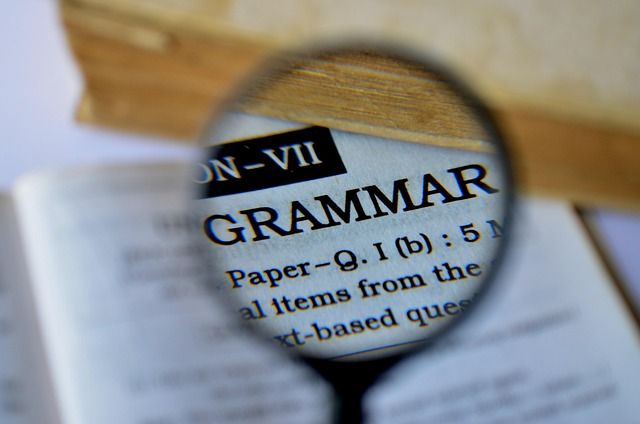What We Review
Mastering SAT® Grammar Rules: A Study Guide
Grammar plays a major role in the SAT® Reading and Writing Test. It helps ensure that ideas are clear, concise, and easy to understand. By learning core SAT® Grammar Rules and applying them effectively, students gain the ability to notice mistakes and fix them efficiently. Therefore, this guide focuses on essential grammar concepts, practical examples, and helpful strategies to boost confidence on exam day.
Effective grammar also helps with writing clarity. When each sentence is consistent, the overall message becomes more coherent. The goal is to master these fundamental grammar rules so that they become second nature. Consequently, students will find it simpler to tackle sat® grammar practice questions, making the test experience less stressful and more rewarding.
Understanding Common SAT® Grammar Rules
SAT® grammar topics revolve around Standard English conventions. These include subject-verb agreement, pronoun-antecedent agreement, proper modifier placement, verb tense consistency, and punctuation rules. Each skill connects to the need for clear communication.
- Subject-Verb Agreement: Subjects and verbs must match in number (singular or plural).
- Pronoun-Antecedent Agreement: Pronouns must match their nouns in number and gender.
- Modifier Placement: Modifiers need to be placed where they logically belong.
- Verb Tense Consistency: Verb tenses should remain consistent throughout a sentence or passage.
- Punctuation and Sentence Structure: Proper use of commas, semicolons, and sentence boundaries.
Learning these areas helps with Sat® grammar practice and leads to a deeper understanding of how to fine-tune sentences. Moreover, it assures that ideas are presented accurately and logically.

Subject-Verb Agreement
Subjects and verbs must always agree in number. If the subject is singular, the verb should be singular. If the subject is plural, the verb needs to be plural. Notice how this rule can change the meaning of a sentence.
Example
- Correct: “The dog barks.”
- Incorrect: “The dog bark.”
Step-by-Step Breakdown
- Identify the subject: (e.g., “dog”).
- Identify the verb: (e.g., “barks”).
- Check agreement: “dog” is singular, so use “barks,” not “bark.”
Practice Problem
Choose the sentence that correctly follows subject-verb agreement:
A) The teachers works long hours.
B) The teachers work long hours.
Step-by-Step Solution
- Identify the subject: “teachers” (plural).
- Check the verb form: “works” is singular, while “work” is plural.
- The correct choice matches a plural subject with a plural verb. Therefore, “The teachers work long hours” is correct.
Remember this rule any time a sentence has a clear subject and verb. If they don’t match, adjust the verb to match the subject’s number.
Pronoun-Antecedent Agreement
Pronouns replace nouns (antecedents) and must match in number and gender. This ensures clarity and prevents confusion, especially in longer passages. Therefore, always confirm that the pronoun accurately reflects the noun it represents.
Example
- Correct: “Each student must hand in his or her homework.”
- Incorrect: “Each student must hand in their homework.”
Step-by-Step Breakdown
- Identify the noun (antecedent) the pronoun refers to: “Each student.”
- Match number and gender: “Each student” is singular, so use “his or her,” not “their.”
Practice Problem
Select the correct version of the sentence:
- “Anyone who wants to join the team should bring their ID.”
- “Anyone who wants to join the team should bring his or her ID.”
Step-by-Step Solution
- “Anyone” is singular, even though it sounds general.
- The pronoun replacing “anyone” must be singular.
- Thus, the correct sentence is: “Anyone who wants to join the team should bring his or her ID.”
This rule can appear tricky because “everyone” or “anyone” seem to refer to multiple people. However, treat these words as singular, and use a matching pronoun.
Modifiers: Placement Matters
Modifiers describe or limit meaning. They can be as simple as single words (e.g., “quickly”) or phrases (e.g., “Running across the field,…”). If placed incorrectly, modifiers can confuse readers. Two common issues include dangling modifiers and misplaced modifiers.
Dangling Modifiers
A dangling modifier occurs when the modifier at the beginning of the sentence has no clear subject to describe.
Example of a Dangling Modifier
- Incorrect: “Walking down the street, the flowers were beautiful.”
- Correct: “Walking down the street, I saw the beautiful flowers.”
Step-by-Step Breakdown
- Identify the modifying phrase: “Walking down the street.”
- Make sure the subject of that phrase is clear right after the comma (in this case, “I”).
Practice Problem (Dangling Modifier)
Find the correct sentence:
A) “Expecting a package, the delivery van zoomed by.”
B) “Expecting a package, she watched for the delivery van.”
Step-by-Step Solution
- Identify the modifier: “Expecting a package.”
- Check the subject that follows: In option B, “she” is identified as the one expecting.
- Therefore, option B is correct.
Misplaced Modifiers
A misplaced modifier occurs when the modifier is not placed close enough to the word it describes, leading to confusion.
Example of a Misplaced Modifier
- Incorrect: “She served sandwiches to the children on paper plates.” (This might imply the children are on paper plates!)
- Correct: “She served sandwiches on paper plates to the children.”
Step-by-Step Breakdown
- Locate the modifier: “on paper plates.”
- Place it next to the correct noun: in this case, “sandwiches.”
Practice Problem (Misplaced Modifier)
Which sentence is correct?
- “He almost ate all of the cookies.”
- “He ate almost all of the cookies.”
Step-by-Step Solution
- Identify the intended meaning: Did he nearly eat the cookies, or did he eat nearly all the cookies?
- “He almost ate all of the cookies” could imply he did not actually eat them.
- “He ate almost all of the cookies” states that most cookies were eaten.
- Since the sentence likely means he ate most cookies, option 2 is correct.
Verb Tense Consistency
Verb tense errors occur when the tense changes without a logical time shift. Sentences and paragraphs should maintain the same tense unless there is a clear reason to switch.
Example
- Correct: “She walks to school every day.”
- Incorrect: “She walked to school every day.” (This implies past tense, but “every day” suggests a habitual action that still happens.)
Step-by-Step Breakdown
- Identify the main verbs and their tenses.
- Check whether all verbs are in the correct tense.
- If a sentence starts in the present tense but shifts to the past for no reason, adjust the verb form.
Practice Problem
Choose the correct sentence:
A) “He studies all night and then slept during the test.”
B) “He studied all night and then slept during the test.”
Step-by-Step Solution
- Identify the verbs: “studies” (present) vs. “slept” (past).
- If the entire action happened in the past, both verbs should be in the past tense.
- Therefore, the correct version is B: “He studied all night and then slept during the test.”
Consistent verb tense helps maintain clarity for the reader. It also shows a strong understanding of time references.
Punctuation and Sentence Structure
Punctuation rules, such as using commas or semicolons, help organize thoughts. Good sentence structure prevents run-ons or fragments.
Example
- Correct: “I went to the store, and I bought some bread.”
- Incorrect: “I went to the store I bought some bread.”
Step-by-Step Breakdown
- Look for the point where a new independent clause begins.
- Decide whether to use a comma and coordinating conjunction, or a semicolon, to link clauses.
- Ensure each clause remains a complete sentence if it stands alone.
Practice Problem
Identify the correct punctuation usage:
A) “She planned the party and many people attended.”
B) “She planned the party, and many people attended.”
Step-by-Step Solution
- “She planned the party” is one independent clause.
- “Many people attended” is another independent clause.
- Connect them with a comma and coordinating conjunction.
- Therefore, the correct choice is B.
Proper punctuation keeps sentences understandable and refined, which is central to standardized test success.
Quick Reference Chart
Below is a quick reference chart to help remember essential grammar rules and definitions. Copy and paste this table into a study document for easy access:
| Term | Definition |
| Subject-Verb Agreement | Ensures subjects and verbs agree in number |
| Pronoun-Antecedent Agreement | Ensures pronouns match their antecedents in number/gender |
| Dangling Modifier | Modifiers that do not clearly describe a subject |
| Misplaced Modifier | Modifiers placed improperly in a sentence |
| Verb Tense Consistency | Keeping verb tenses appropriate throughout text |
| Punctuation Rules | Guidelines for proper sentence separation and clarity |
Conclusion
SAT® grammar questions test a student’s ability to use Standard English conventions. Good grammar skills not only boost test scores but also help with effective writing and speaking. Moreover, practicing these rules makes it simpler to spot errors and correct them quickly.
Keep reviewing subject verb agreement, pronoun antecedent agreement, and correct modifier placement. Furthermore, pay attention to verb tense errors and punctuation to maintain clarity. By following these strategies, test day can be less overwhelming and the results more rewarding.
Additional Tips for SAT® Grammar Practice
- Practice Daily: Frequent short drills can strengthen grammar skills.
- Use Grammar Guides: Websites, textbooks, and online quizzes can offer quick feedback.
- Review Wrong Answers: Carefully re-check missed questions to understand the error.
- Take Practice Tests: Timed tests mimic the actual exam format and build confidence.
- Stay Consistent: Regular study leads to gradual improvement and lasting retention.
Using these approaches allows students to refine their editing skills and master the core conventions of Standard English sentence structure, usage, and punctuation. Good luck on the SAT® Reading and Writing exam!
Sharpen Your Skills for SAT® Reading and Writing
Are you preparing for the SAT® Reading and Writing test? We’ve got you covered! Try our review articles designed to help you confidently tackle real-world SAT® Reading and Writing problems. You’ll find everything you need to succeed, from quick tips to detailed strategies. Start exploring now!
- SAT® Punctuation Rules: SAT® Reading and Writing Review
- Rhetorical Synthesis: SAT® Reading and Writing Review
- Transitions: SAT® Reading and Writing Review
Need help preparing for your SAT® Reading and Writing exam?
Albert has hundreds of SAT® Reading and Writing practice questions and full-length practice tests to try out.








